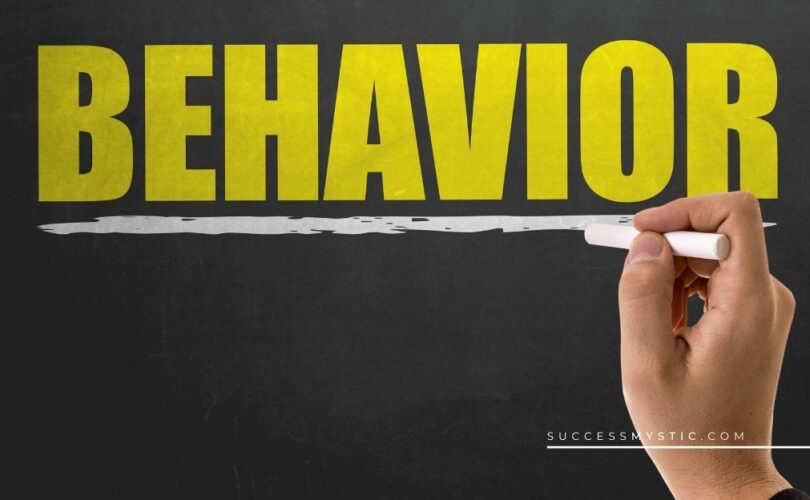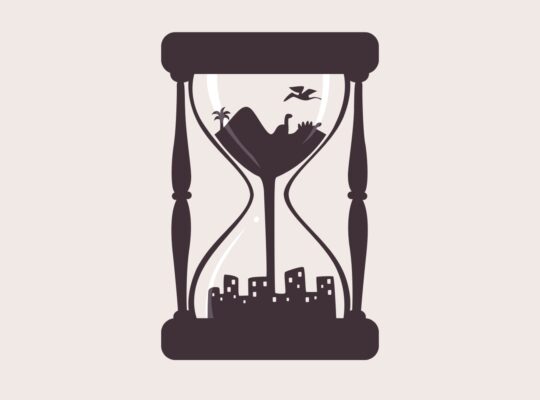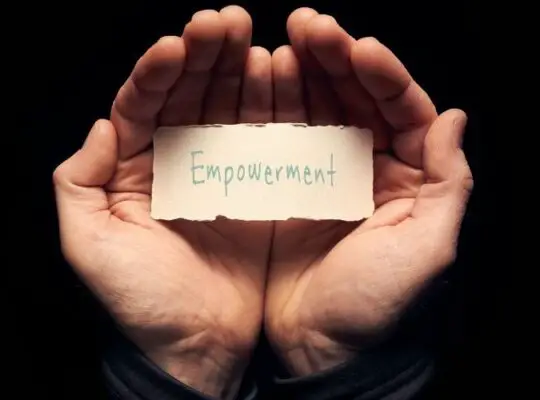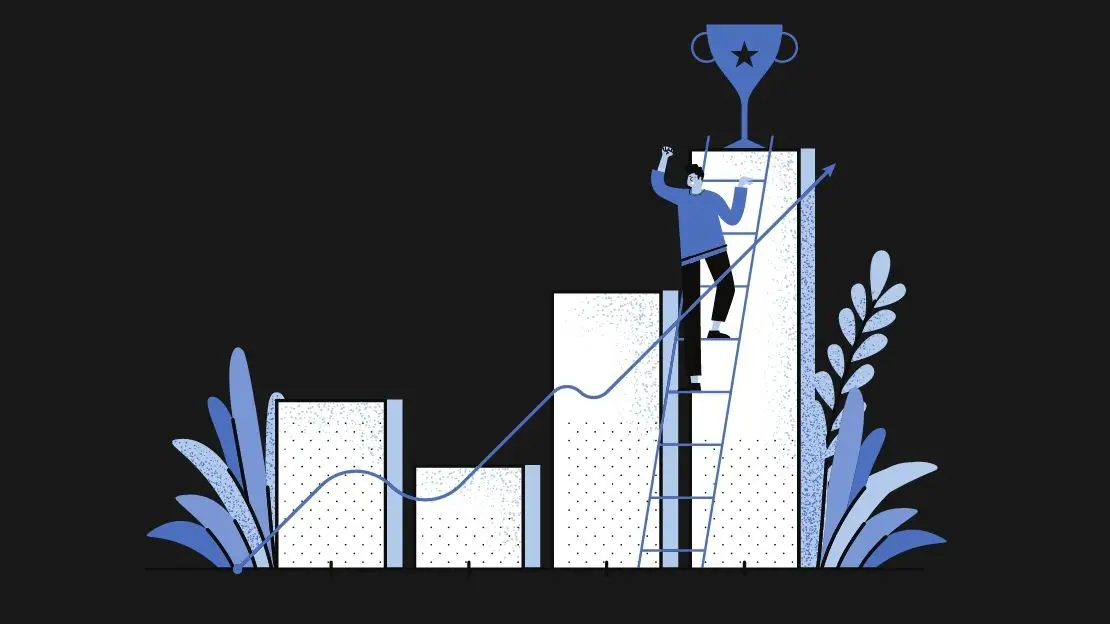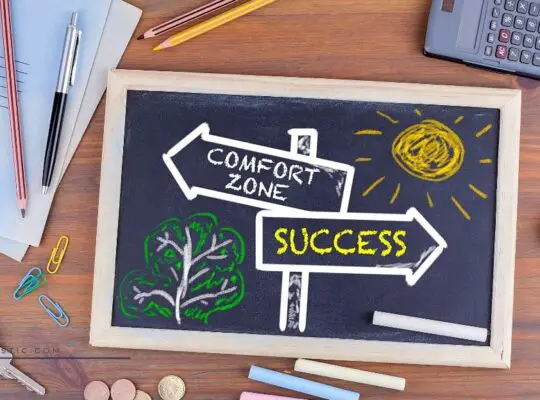When you are looking to accomplish any personal development goal or change yourself in any way, the process is a combination of changing your mindset, your emotions, and your behavior. Choosing to design the life you want and, therefore, design the actions that will help you achieve your dreams, is a way to take control of your life while becoming the best version of yourself.
Behavior design, like the life design process, involves some introspection, clarity of your goals and ambitions, then careful planning. All of these, plus the right outlook, are crucial to changing your behavior and becoming who and what you want to be.
Behavior design teaches you to identify the habits that are most helpful to you in life as well as those that are holding you back from attaining your goals. Learning to develop healthier, more productive, and more positive habits can ensure that you reach the highest heights and live a life of fulfillment and joy.
Designing and changing your behavior can be difficult. It is not enough to want to be better or act differently; you have to be willing to put in the work. Below, we will share with you ideas for how to accomplish this so that you can achieve everything you want in life.
Understanding Habits and Behavior
How you act is a collection of your regular, everyday habits in life. In any given day, chances are incredibly high that you do most of the same things as you did the day before. But, what is a habit, really? The writer Octavia Butler described it very eloquently. “
Habit is persistence in practice.” Most of your habits probably go unnoticed at this point in your life because you are so used to them. They form your foundation of what is “normal.”
It’s a Process
Learning to change your behavior, then, is merely practicing new habits again and again until they become your new normal. From small micro-habits that add up to more significant routines, your behavior is simply the culmination of all these habits strung together.
If you want to design new practices, you merely have to learn to change your habits over time. Soon, you will see that these small changes, when repeated enough and combined, have changed how you act and react to the world around you.
The biggest misconception most people have about changing behavior or learning new habits is that it has to be dramatic and happen quickly. In fact, the most lasting and meaningful change you can make is small gains each day. These incremental changes are powerful enough to equal true, permanent behavior design and provide you with the results you need and want to accomplish your aims.
Because your behavior is a combination of every habit you have built over time, small decisions and efforts can combine to change how you behave. Improvements of just one percent can add up quickly to create significant differences in your behavior.
This process takes time and attention, though. Designing your behavior will only happen as part of continuous, gradual process.
It Takes Practice
What will help you change your habits is practice. Regular, consistent training will enable you to change how you react because it changes the way your brain is wired and the neural connections between stimulus and ingrained responses.
There is an old saying that “Practice makes perfect,” but in reality, it should be “Practice makes permanent.” The only lasting behavior change will be those that you practice, as this will actually help you change those neural connections and make a lasting difference.
You Have To Overcome Resistance
Everything in our lives is seeking to find equilibrium or homeostasis. From our bodies to our environment to our behavior, the world and everything in it is continually trying to stabilize and stop changing. Your brain and body naturally want to resist change for this reason. We like the way things are, which is why habits form and are so difficult to break.
Whatever resistance you experience will be in proportion to the speed and size of your change efforts. Whether you are making a positive or negative change in your behavior is not relevant to how successful you will be. To make it last, you have to take it in small steps and over more extended periods of time. Slow and steady wins the behavior-design race.
How To Design Your Behavior
Achieving the small daily wins that lead to lasting behavior design is possible when you know how best to accomplish this goal. There are just a few necessary steps that can help you design your new behavior and achieve the change you have been craving.
Step 1: Get to Know Yourself
When designing your behavior, you need to have a good understanding of your behavioral strengths and weaknesses. This includes exploring the origins of your undesirable actions and habits as well as your motivations for wanting to make these new changes.
Start with an honest self-assessment that includes your current habits and routines. Write them all down. Dig deep to examine the micro-habits that are playing a role in your larger patterns of behavior.
Only with an honest and realistic understanding of yourself can you hope to make lasting change. Once you have determined in which area you would most like to focus, be sure you understand why this is important to you and where your negative behaviors started. If there are underlying emotional issues connected to these behaviors, dealing with those will be extremely important, too.
Build on your positive behaviors and habits. These will reinforce your new behaviors and help you feel confident and competent. Connect positive new habits with positive old habits to help them become permanent.
Step 2: Get to Know Your Triggers
Triggers are stimuli that set off your unwanted behavior. Triggers can be a lot of different things, including other people, specific locations, even smells or sounds. These triggers are like the neural breadcrumbs in your brain. They lead your mind from the stimulus back to your habit or old behavior. Knowing your triggers and avoiding them, or creating new ones, is essential for designing and solidifying new behaviors.
After you have identified a specific new behavior you want to develop, it is essential to know the most likely triggers that could impede your success. When you find yourself having the hardest time resisting your unwanted behavior, what were the triggers? How were you feeling? What had you done previously? Where were you and who were you with?
Knowing your triggers can help you avoid these obstacles and challenges to designing new, healthier habits as well as identifying new triggers for the behavior you are trying to reinforce.
This may mean avoiding certain people, places, or other habits for a time while you are strengthening your behavioral change. But, it is also an excellent opportunity to practice your new routine.
Step 3. Be Positive
Your mindset is crucial to successfully changing your behavior. Keeping an optimistic outlook and staying positive will help you when your inner strength may wane, and this mindset can keep you focused on the reasons why you are choosing a new design for your behavior.
Every day write down the positive changes you are making in your practice or something positive that has happened to you. Be grateful for the things you have and can experience in life and change your negative self-talk into positive affirmations to help you remain strong.
When changing behavior, it can be helpful to surround yourself with supportive others who can help you focus on the positivity in your life, as well. Loved ones, friends, and co-workers are excellent supports, as are online groups and other types of communities who are also engaged in designing and changing their own behavior. Seek out positive supports that can provide you with energy and reinforcement for the tough changes you are trying to make.
You can even design positive rewards for yourself for meeting short-term goals or making incremental progress. Remember to choose rewards that work for you and are aligned with your values and beliefs and be sure your rewards do not interfere with your forward progress.
Step 4: Be Kind to Yourself
Treating yourself kindly during this process will be important. You will make mistakes, you will experience setbacks, and you may feel overwhelmed at times. It is okay to acknowledge these feelings because real, lasting change is hard.
Mistreating yourself or punishing yourself is not going to help you solve your problem or make better progress, so be sure you are staying positive, even when you have minor setbacks.
Remember that changing behavior is a learning experience. Every time you mess up or revert to old behavior is an opportunity to learn from feedback.
Were there triggers that maybe you had not planned for? What can you learn from this to apply to future efforts?
Do you need to slow your progress so as not to invoke more stress or anxiety? Use each negative experience as a teachable moment and permit yourself to not be perfect.
When your mind learns to accept behavior design as a positive experience, it will more likely result in long-lasting change.
Take care of your mind and your body, and you will be much more likely to have the energy needed to focus on changing your habits. Slow down, relax, and be kind to yourself, and start again tomorrow.
Step 5: Practice Persistence and Patience
Behavior design is less about altering habits and more about building patience. Because the results of your behavioral change are going to be a long time in the future (if you are doing this process well), you have to accept that patience and persistence are the only things that are going to see you through to the end. It took you years to entrench the lasting behaviors you are trying to change, so you are not going to alter them overnight. It will take time. A long time. And the sooner you appreciate and understand that, then the sooner you can get to work on the small, daily changes that will get you where you want to be.
When you find your patience waning, it is an excellent opportunity to examine what you have gained thus far. How have you been successful already in your process? What effects have you noticed as a result of your changing habits? Focus on the positives, reward the progress, and vow to stay persistent tomorrow and the next day.
Gradual, incremental adjustments make the change more gradual but also much more easy for your mind and body to accept. This practice also builds persistence and can help you gain more patience. Slow and steady does, in fact, win the race when it comes to behavior design.
The more you practice your new behavior, the more you are solidifying it into your neural pathways. And the more you neglect the habit you are trying to replace, the more likely your brain is to lose that unwanted muscle memory. Focus on what you can do and what you can control and let the process work.
Tips for Changing Your Habits and Behaviors
Now that you know the necessary steps of behavior design, it is time for some hands-on practices that can help you make those new habits a reality. When you find yourself struggling, it may be time for a new tactic, so we have compiled some tips for helping you change your behaviors and habits to keep you motivated and on track.
Don’t Change Too Much at Once
When you are focusing on behavior design, pick one habit to focus on at a time. Changing too much at once is a recipe for failure. By keeping it simple, you allow the work of lasting habit change to occur. Your mind and body can focus on the incremental, gradual change needed to help you achieve success.
There are likely a lot of things you may want to tackle with behavior design. Prioritize which is most important and start with that one thing. You can focus on something else once you have made this a new part of your habits and routines.
Write Down Your Goals
There is something magical that happens when you take the time to write things down. Saying words is still a very ethereal thing but putting pen to paper and committing your words to a page means they are real. Write it down. Write it down every day if it helps.
Write it down and post it where you can see it often. But the act of writing enables you to turn dreams into action, so use it whenever you need to increase your motivation or restart your efforts.
Be Clear About Your Motivations
The only kinds of motivations that will ultimately result in lasting, positive change are those that come from your heart and help you live your values and beliefs. If your motivation is connected to what others want or to impress someone else, your behavior design efforts will not be successful, at least not in the long run.
Your motivation should be deeply rooted in your beliefs and values, not on surface worries like vanity. If you feel yourself sliding back into old habits, it is time to revisit your motivation. Write it down. Focus on why this behavior design is important to you and what it will do for your life.
Be Aware of Your Obstacles
If you have ever tried to change your behavior in the past, you have likely had some amount of failure. Now is a good time to reflect on why you may have failed before and identify the obstacles that impeded your success.
What barriers can you identify? Write them down.
What obstacles do you anticipate with this behavior design effort? Write those down, too. For each constraint, identify one or more solutions for avoiding or overcoming these barriers.
You will be better prepared when the time comes, and you may discover your path is not as impeded as you thought.
Focus on the Incremental
If you find yourself filled with stress or anxiety, you may be changing too much. Focus on the small, minute change you can make today. Do that. Do it again tomorrow.
Once you are okay with that small change, add in a little more the next day. Focus on the small and you will soon see big results.
Create Some Urge-Resisting Strategies
We all have urges that make us want to misbehave. Cravings are strong, and we cannot deny they exist. But the great thing about impulses is they do not last very long, and you can learn to overcome them.
While urges may feel strong in the moment, most do not last but a few minutes and, once they pass, you can think more clearly and make good choices. Identify what it feels like when you have the urge to revert to bad behaviors.
Know the physical and emotional cues that tell you that you have a craving. Then focus on breathing deeply, remembering your motivation, or some other strategy that works well for you to get you past the momentary urge.
Tell Someone What You are Doing
Like writing it down, telling someone else what you are trying to do is a positive, motivating factor. Share your intentions with someone else. It can be a trusted friend or loved one, or you can share with an online forum, in your blog, or with a support group.
These others can help you develop a sense of accountability regarding your behavior design. Making your intentions public, as well as your progress toward meeting your goal, gives you the motivation to resist temptation, to stick to your new behaviors, and to succeed over time.
Monitor How You Talk to Yourself
You are always talking to yourself in your mind, even if you do not always pay attention to it. It is time to start noticing how you speak to yourself about yourself. Your self-talk can be the difference between success and failure when it comes to behavior design.
If you find yourself full of negative thoughts and doubts, work towards making a conscious effort to change that self-talk into more positive affirmations of your efforts and progress. Until you are aware of your inner monologue, though, it can be hard even to know what impact it is having on your efforts.
Prepare for the Naysayers
There are just some people out there who have nothing positive to contribute, so they share with you nothing but negative input and feedback. They may try to draw you back into your old behaviors or put down your efforts.
Prepare yourself for these and know how you will confront these situations when they arise, because they will. Do not allow others to change your plans or derail your efforts. If they continue to be a negative influence, it is time to remove them from your life until they can learn to be supportive of what you are trying to accomplish.
Ask For Help
There will be times when you feel like you can’t do this on your own. Ask for help. Find someone who can be the ear you need to listen, the should you need to lean on, or the mentor you need for advice, but get help instead of struggling on your own.
Those with support systems are much more likely to make real, lasting change. If you have an urge to engage in your old, negative behavior, share it with at least one person before you give in. The chances are high that this act alone can stop you from derailing your progress.
Try Your New Habit for 30 Days
While it will take longer than 30 days to fully solidify a habit, embracing the notion of a 30-day challenge has many benefits.
For one, if you engage in something every day for 30 days, you have made significant progress toward making your new behavior a long-term part of your habits.
Secondly, as a round number that equals a month (usually), 30 days is something most people feel like they can commit to in the beginning. Once you have made it to the 30-day mark, you can evaluate your progress and set a new goal for the following month. But, start with 30 days and go from there.
Make a Plan and Write it Down
I know you are surprised to read that writing your plan down is important! Seriously, though, having a strategy is crucial for attaining a goal. When you take the time to write your plan down, it forces you to think through all part of the design and determine where you might have trouble, where you many missed a step, and how long it is likely to take you.
Your plan needs to include the reasons for your behavior design and your methods for overcoming obstacles and possible setbacks along the way. Write it all down. These are good reminders for when things get hard.
Visualize
Visualization is a powerful tool for helping design your behavior. Start by visualizing yourself when you have successfully changed your habit and replaced it with a more positive behavior. How will you feel?
- What will be different about your life?
- How will you feel?
- What is most exciting about achieving this goal?
Create a vivid mental image of yourself after you have reached your goal, and you can return to this visualization any time you need to clarify your motivation or overcome a setback.
Renew Your Commitment
Along the road, while engaging in behavior design, you may forget why you chose this path. Remind yourself as often as you need. Recommit yourself to your decision and motivation. Write it down. Read it over and over again.
Review your plan, celebrate what you have already achieved, and refocus on why you are doing what you are doing. We need to recommit frequently to those things that matter most, or we take them for granted. The same is true of your goals for designing your behavior.
Give Yourself a Pep Talk
Sometimes, we just need to hear some positive words, and what better person to deliver those than the one who knows you best? Be your best cheerleader and inspiration.
Talk to yourself often and do it in your head if talking aloud makes you worry what others might think. Repeat your positive words of affirmation and motivation as often as you need to keep going and working toward your goal.
Final Thoughts
When it comes to designing your behavior and making last changes in your habits, it is essential that you are honest with yourself, that you develop a plan based on your beliefs and values, and that you understand just how long-term change comes to be. Accepting that change takes time, patience, and persistence is vital to changing your habits to alter your behavior, so prepare yourself appropriately for the journey ahead before starting the behavior design process.
Whatever it is you are trying to change about your habits, know that many others are struggling with the same issues. Find help and support in loved ones, online communities, and support groups. And be sure you are treating yourself kindly and with gentleness because making changes is difficult on your sense of worth and esteem.
When your values and beliefs really motivate you, and when you approach behavior change with the right mindset and attitude, it is possible to change your routines and habits slowly to produce new behaviors reflective of who you want to be. Just embrace the process and know that each day is an opportunity to keep moving forward and learn more about yourself.

